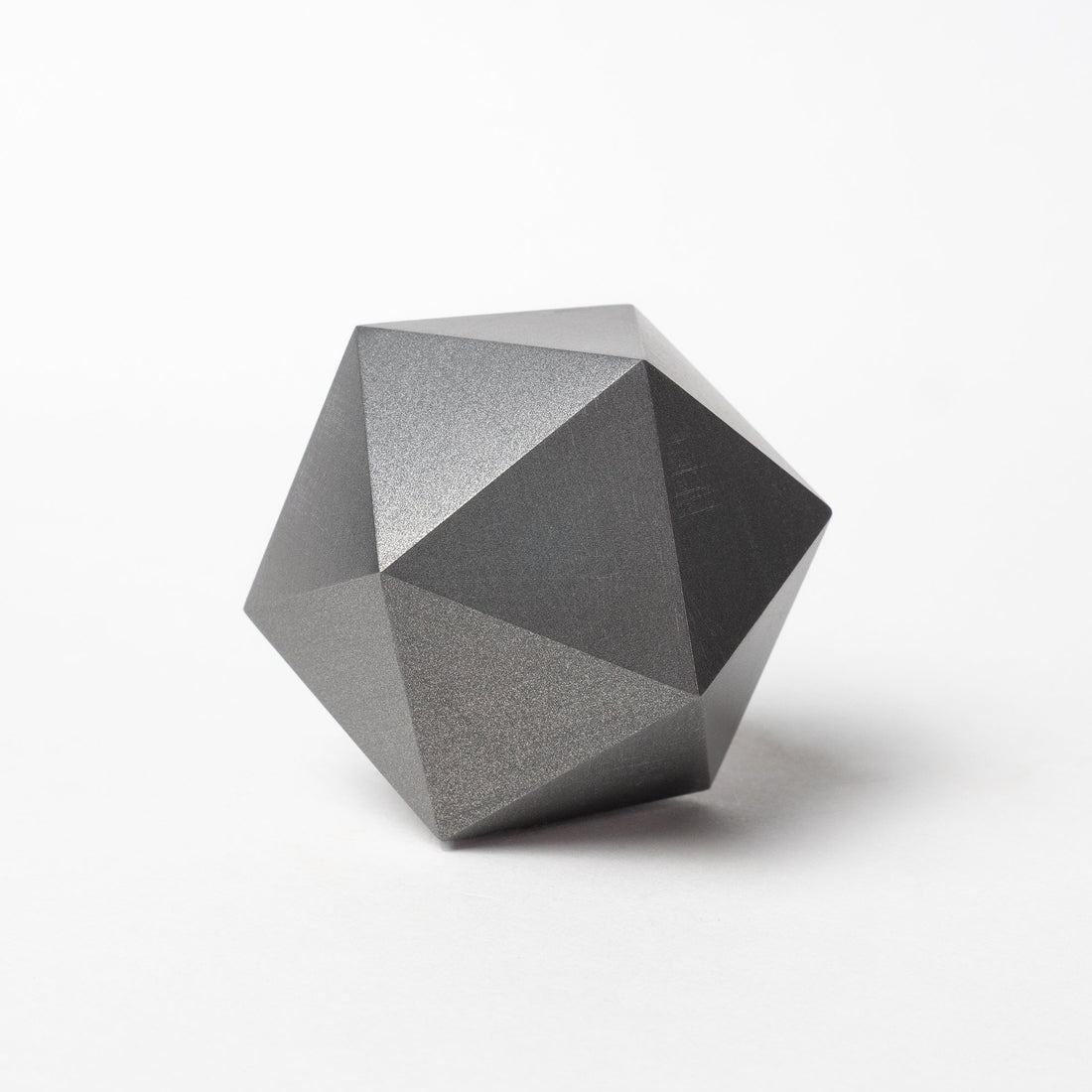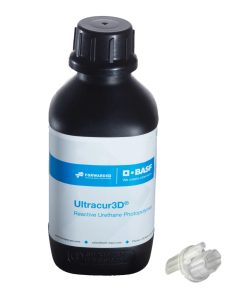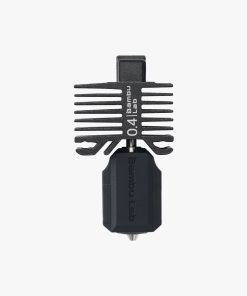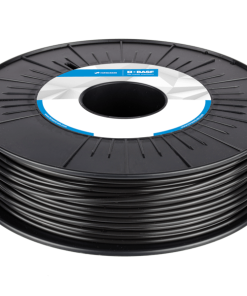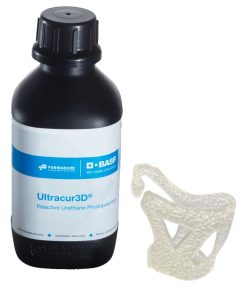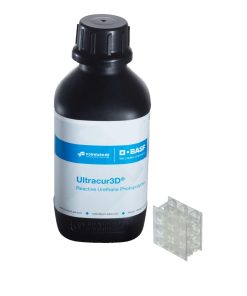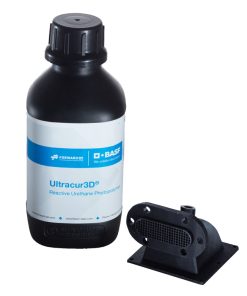Protopasta Metal Composite PLA – 1.75mm (500g) – Steel filled Protopasta
$ 49,99 $ 29,99
Protopasta Steel-filled Metal Composite PLA – 1.75mm (500g)
Protopasta Stainless Steel PLA filament is a dense material that prints as easily as standard PLA but results in heavy cast metal looking prints that can be brushed, sanded, or polished post-print to achieve amazing results. Using real steel powder, this premium, metal-filled steel PLA filament is perfect for jewelry, costumes, props, figurines, crafting, robots, or any other 3D prints needing a truly stainless steel finish.

Prints like plastic, polishes like stainless steel!
Introducing Stainless Steel-Filled Metal Composite PLA. Using real steel powder, we’ve created a premium metal PLA filament for 3D prints that finish just like real stainless steel! Our steel composite filament is as versatile as it is beautiful, printing like plastic, but finishing like real metal for beautiful, durable parts from most standard 3D printers.
**This filament is more abrasive than standard PLA. Be prepared to replace your nozzle and do 1st layer adjustment. Try a wear resistant and/or larger diameter nozzle for increased service intervals.
- Available in 1.75 & 2.85 (3) mm diameters.
- 125g are loose coils, 500g is on a 8″ diameter spool, 2kg is on a 12″ diameter spool.
- Usable on most PLA-compatible printers, such as Lulzbot, Makerbot, FlashForge, Dremel, Ultimaker, Printrbot, and more!
In filament form, SSPLA is slightly more brittle than standard PLA, and requires extra care when handling. Processing is comparable to standard PLA. No heated bed required. Process may be less consistent on smaller nozzles and/or bowden type machines, We frequently print using direct-drive systems with 0.4mm nozzles, though suggest 0.6mm and 210-230C for the best experience.
FINISHING TECHNIQUES
Whether you want your prints to be polished with the same bright mirror finish of shiny steel coins or a naturally rustic finish with an acquired patina reminiscent of an aged steel sculpture, the possibilities are endless with this specialty metal PLA filament. With so many finishing options, the sky is the limit! Here are just a few common finishing techniques for metal composite filaments you might want to try:
- Wire Brush to expose metal for future oxidation or a bright, satin finish
- Rock tumble with steel shot for darker, but smooth, shiny look
- Paint part (black for example) to fill recesses with a contrasting color
- Polish with a rotary tool, cotton buff, and polishing compound for a bright, mirror finish on high spots (darkens low spots)
- Polish with paper for a clean, smooth, and bright finish with less darkening
- Patina (oxidize) exposed metal naturally or accelerate with a 50/50 vinegar/hydrogen peroxide mixture saturated with salt. Place in sealed plastic bag to retain moisture. Heat further accelerates reaction.
Try these techniques separately or combine! Change the order or try something new. If you discover a new technique, make something beautiful, or discover something unexpected, share it! When you’ve got that perfect, WOW finish, consider preserving it with a clear coat or brush applicable water-based, food-safe, and dishwasher safe coating like Modge Podge. Practice your finishing a on a test piece like Protognome (download here).
Now the only question is, “What will you make?”
APPLICATIONS
Some application ideas include:
- Faux brick or stone
- Fixtures or hardware
- Knobs or buttons
- Heat sinks or exchangers
- Fine art & sculpture
- Emblems, signage, or trophies
- Jewelry, like pendants or bracelets
- Cosplay, game pieces, or figurines
MATERIAL DATA
- Base resin: PLA
- Additive: Real Steel Powder
- Particle size: less than 250 micron (0.25mm)
- Odor: low or no
- Density: Approx. 2.30 g/cc
- Length (500g): 97m (1.75mm) and 36m (2.85mm)
PRINTER SETTINGS
- Speed: 10-20 mm/s 1st layer, 20-80 mm/s rest of part
- Nozzle Set-point: 185-215C (hottest on 1st layer for best adhesion)
- Nozzle Actual: maintain set-point, reduce speed if less than
- Nozzle Type: Standard or wear resistant for extended use
- Nozzle Diameter: 0.6mm or larger preferred, 0.4mm okay with 0.25mm minimum for experts
- Layer thickness: 0.15-0.20mm recommended for a balance of quality, reliability, and productivity
- Bed Temperature: Room-60C (over 60C can worsen warp)
- Bed Preparation: Elmers purple disappearing glue stick or your other favorite PLA surface preparation<
This material has been flow optimized and has less moisture uptake than standard PLAs, however composites are still sometimes more tricky to print depending on hardware and software settings. The main challenge is to keep mass flow up (larger nozzle + fast speed) and in a single direction (minimal retraction) to avoid heat soak.
Stainless Steel PLA FAQ
What is it made out of?
Protopasta Stainless Steel PLA is a compound of Natureworks 4043D PLA and finely ground, powderized stainless steel. In filament form, it is rather brittle, and should be handled with care to avoid breakage.
Is it stronger?
No. Protopasta Stainless Steel offers the aesthetic and density of metal, but because the stainless steel is finely powderized and encased in PLA, it is not stronger than standard PLA.
Is it conductive?
No. The stainless steel is too small and separated by the PLA to offer any noticeable amount of conductivity. You should try our Conductive PLA!
Finishing Techniques
In an unfinished form, prints look like cast metal. They can be left that way, or finished through a variety of methods to achieve different results. Here are some of the methods we have tried so far:
- Wire Brushing: Simply rubbing back and forth with a stiff wire brush will give your print increased shine, but will not remove print lines.
- Rock Polisher: Small prints can be tumbled for 24+ hours with abbrasive materials for a variety of finishes. We recommed steel shot.
- Wheel Polishing: The most brilliant results were achieved by lightly polishing prints using a polishing wheel (a wheel with layers of soft cloth, attached to a bench grinder, you can buy smaller wheels for drills) and Fabulustre Cut and Polish Compound (or similar polishing compound). Aside from the eye-catching shine, it is also possible to remove layer lines with this method.
Spool Amount: Density vs. Length
3D printer filament is sold in grams /kg, even in the case of exotic materials with greater density. Our Stainless Steel PLA is quite dense compared to standard PLA. As a result, a 500 g spool of Stainless Steel PLA contains about 90 meters of filament, vs. nearly 200 meters on a 500 g spool of standard PLA.
Printer Settings
Protopasta Stainless Steel PLA prints well using standard PLA settings, however, it may have trouble getitng through smaller nozzles. We have had good success printing at 215° C using a .5mm nozzle and direct-drive spring loaded pinch-roll style extrusion head.
Density:
2.4 g/cm3 (2400 kg/m3)
Parameters:
Bed Temp (if available, is not required): 50° C
Hot End Temp: 195 – 220° C
Professional packing and fast shipping
Due to our longstanding partnership with UPS FedEx DHL and other major global carriers, we are able provide a range of shipping options. Our warehouse staff is highly trained to package your goods exactly as per the specifications we offer. Before shipping the goods are carefully inspected and secured. Everyday we deliver thousands of packages to customers from all over the world. This is a testament to our commitment to be the largest online retailer worldwide. The warehouses and centers for distribution are situated in Europe and the USA.
Orders with more than one item are given processing time for each item.
Before shipping, we will conduct a thorough inspection of the items you've ordered. Currently, most orders are shipped within 48-hours. Expected delivery time is between 3 and 7 days.
Returns
The stock is dynamic and we do not fully manage it because of the fact that multiple stakeholders are involved, including our factory and warehouse. The actual levels of stock can change at any moment. It's possible that the stock may run out after your order has been placed.
The policy is 30 days. If you haven't received the product within 30 days, we are not able to issue a refund or an exchange.
For your item to be returned, it must be unopened and in the same state as you received it in. It must also be in the original packaging.
Related products
3D Printer Resin
3D Printer Parts
3D Printer Accessories
3DFS – Compatible Enclosure with HEPA Cover For UltiMaker S3 3DFS
3D Printer Resin
3D Printer Resin
3D Printer
Filament
3D Printer Resin
3D Printer Resin
3D Printer Resin
3D Printer Resin
3D Printer Accessories
3D Printer Resin
3D Printer Parts
3D Printer Resin
3D Printer
3D Printer Resin
3D Printer Parts
3D Printer Accessories
3D Printer Resin
3D Printer Parts
3D Printer Parts
3D Printer Parts
3D Printer Resin
3D Printer Parts
3D Printer Parts
3D Printer Resin
3D Printer Accessories
.4MM drill cleaning tool for 3D nozzle cleaning Wanhao Precision Casting Co., Limited
3D Printer Accessories
3D Printer Parts



